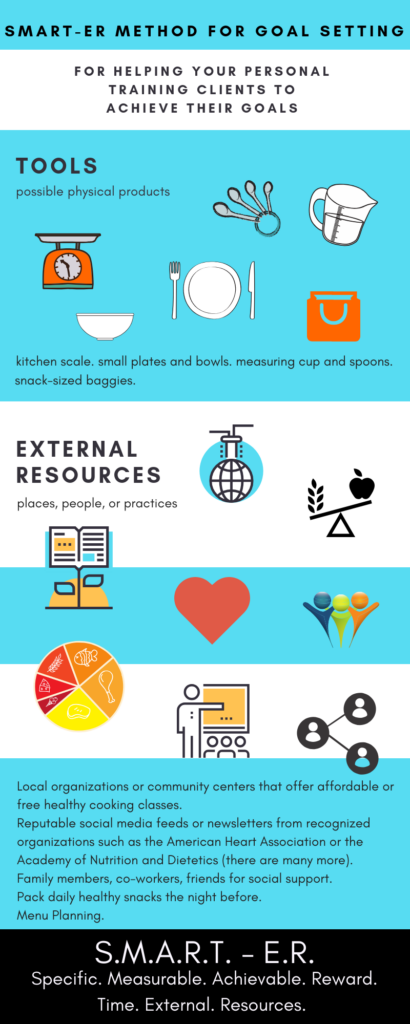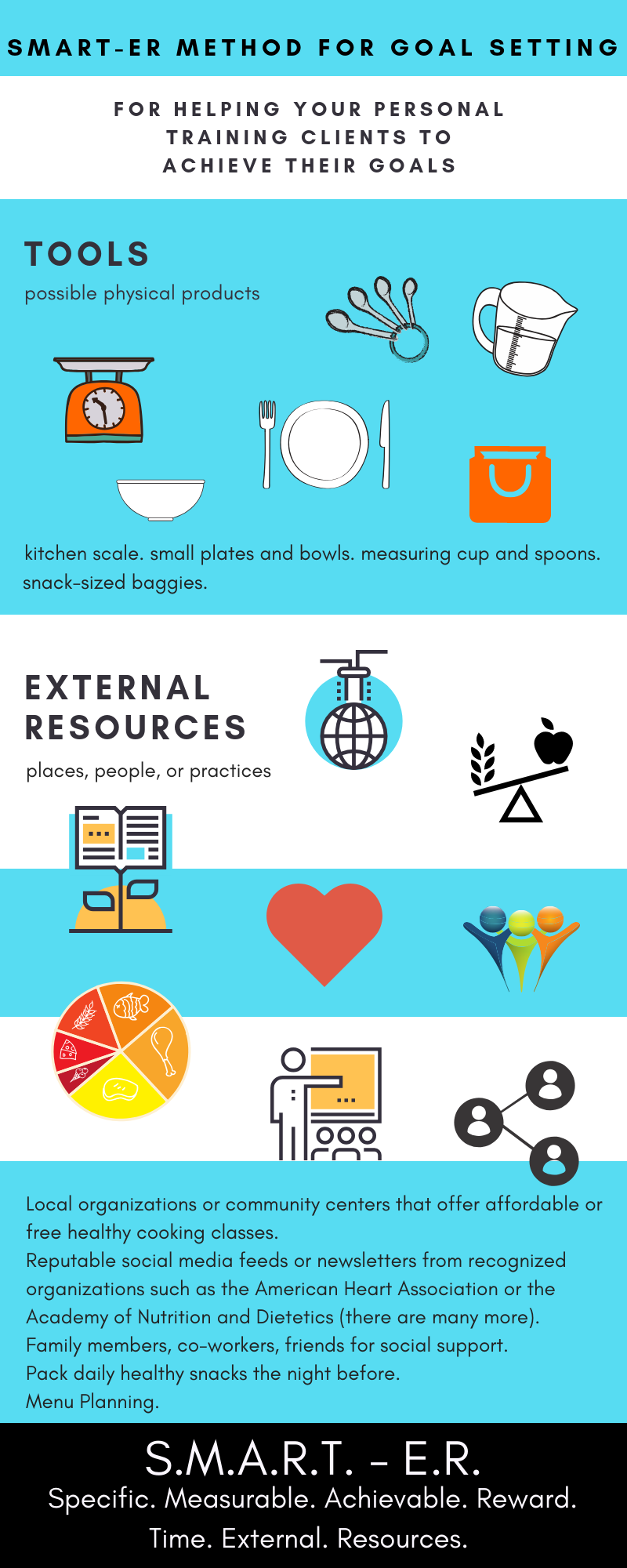Goal-setting is a powerful tool, if it is applied and executed appropriately. To help identify personal training goals with your clients, you must be adept at applying the goal-setting process to your own life. The steps discussed throughout this post will provide you with the guiding principles necessary to set and achieve quality goals.
When it comes to setting goals with clients, it is important to identify both outcome and behavior goals. If we only focus on the outcome our clients want to achieve (i.e. weight loss, increased muscle mass, etc.), we miss the opportunity to encourage the development of behaviors that contribute to successfully achieving the desired outcome. In other words, outcome goals are often beyond the client’s control; whereas behavior is within the client’s control.
Think of an outcome goal as a long-term statement or the main outcome or objective to be achieved. For example, “I want to lose weight in 15 weeks.” In contrast, behavior goals are statements that outline steps to achieving the outcome. For example, “I will exercise 6 days each week for the next 15 weeks.”
Step 1 of Identifying Personal Training Goals: Investigate
Start by having an open and honest conversation with your clients. Most will come to you with loosely defined goals (such as a non-specific outcome goal) and it is your job to find out the why of the outcome goal. What motivates them? What is the significance? Is it to get back in shape after having a baby? Is it to “wow” at a class reunion? Is it externally driven by a doctor as a result of poor blood work results? What is the emotional attachment to their desires? Find out all you can by asking open-ended questions and using motivational interviewing techniques.
Step 1 To Do’s:
- Take copious notes.
- Summarize the discussion verbally to the client to check for accuracy in understanding.
- Ask the client to write down the outcome goal.
Step 2: Identify Behaviors
After the outcome goal is discussed and refined, it is your job to help shape the outcome goal by working with the client to identify behaviors (those actions within the client’s control) that aid in achieving the intended outcome. Referring back to the earlier example, I want to lose weight in 15 weeks, behaviors that relate to this goal might include the client’s commitment to exercise (how often, intensity, etc.) and his/her dietary practices (portion control, fruits and veggie servings, etc.).
Step 2 To Do’s:
- Discuss/brainstorm behaviors with the client. A mind map or webbing technique works well here.
- Write down the behaviors in the form of behavior goals using the SMART-ER Goal Setting method outlined in step 3.
Step 3: The SMART-ER Method for Identifying Personal Training Goals
Standard goal-setting methods encourage Specific, Measurable, Achievable, Reward-based, and Time-defined statements. However, I encourage you to take it one step further – make the goal SMART-ER. In other words, let’s also consider the External Resources needed to support the desired outcome.
Step 3 To-Do’s:
- Brainstorm places, people, products, and practices that can provide support toward goal achievement
External resources are not and should not be limited to physical “things”, but could and should include places, people, and practices. Just because an individual sets a personally meaningful goal does not mean he or she must go it alone or that he or she will be considered successful only if that goal is accomplished in isolation from outside or supportive resources. Create a list of tools and external resources that may help your clients along the way to achieving the objective. See the graphic below for a few examples.
Step 4: Write Down the Goals
This is the fun part! Compile what you learned and discussed from the previous three steps. Use the graphic below to help you piece together what the final goal will look like.
Now, state the final completed goal in paragraph form incorporating each of the elements above.
Example: I will lose 15 pounds in 15 days by committing to exercise 6 days a week for an hour each day and committing to monitoring and controlling my portion sizes. I will reward myself with a massage upon achievement of my goal. I will purchase a kitchen scale, smaller plates and bowls, and measuring tools to help me with portion control.
Step 5: Identifying & Overcoming Obstacles
As with anything, obstacles can and will present challenges. At this point, you will help your clients identify any potential obstacles, barriers, or high-risk situations that may threaten their progress.
Example: I anticipate that the desire to participate in social activities will impact my plan to achieve my goal. I also predict that, with a busy schedule and family, I might not always be able to complete an hour a day of exercise.
Next, discuss strategies for overcoming the identified obstacles, barriers, or high-risk situations.
Example: I will schedule an hour to exercise first thing in the morning. I will also discuss my goal with my family and ask for their support in keeping me accountable.
Once you complete these 5 steps with your clients, they are ready to pursue their goal or goals. To keep the motivation high, help your clients set a reasonable short-term goal that can be accomplished immediately. Lastly, schedule regular “check-in” meetings with your clients to evaluate their progress. Make changes when necessary.
Download 5 Steps to Goal Setting with Clients.
[sc name=”leads” ][/sc]






